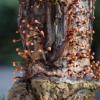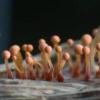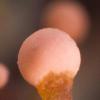
02-12-2025 18:59
This pair of ascos 2.5cm across were on recently b

02-12-2025 19:25
Buckwheat PeteHello, can anyone identify this hairy fungus growi

30-11-2025 12:53
 Edvin Johannesen
Edvin Johannesen
White short-stipitate apothecia found on thin twig

30-11-2025 10:47
 William Slosse
William Slosse
I recently found a collection of small Peziza sp.

27-11-2025 12:01
Thomas Læssøehttps://svampe.databasen.org/observations/10496727

27-11-2025 11:46
Thomas Læssøehttps://svampe.databasen.org/observations/10493918
 Hello Ascofrance!
Hello Ascofrance!I have come across two potential names for this fungus, collected in Andean cloud forest between 2500 and 2950 m.a.s.l. outside of Medellin, Colombia. It has also been observed in Costa Rica at ~600 m.a.s.l., and at least one other locale that I am aware of. It is seen here on some dead, herbacious stem. A very, very similar fungus is tentatively named Chardonia rosea in a color figure on page 143 of Meike Piepenbring's Introduction to Mycology in the Tropics, while this pdf from Funga Veracruzana:
http://fungavera.com/fungavera/funga%20pdf/121-TUBERCULATE.pdf
calls it Tubercularia lateritia. I am here to find out if this fungus should be called either or neither of these names. Sadly, there is no microscopy, so I understand if no advice can be offered. Perhaps the species is sufficiently recognizable to the naked eye to be identified, if only to genus.
Final note: this post is mirrored at Mushroom Observer at the following link:
http://mushroomobserver.org/189147
Many thanks in advance for your contributions.
-Danny

your fungus could be Nectria pseudotrichia asexual state = Tubercularia lateritia.
It is the most common species in subtropical and tropical regions.
Regards,
Christian



